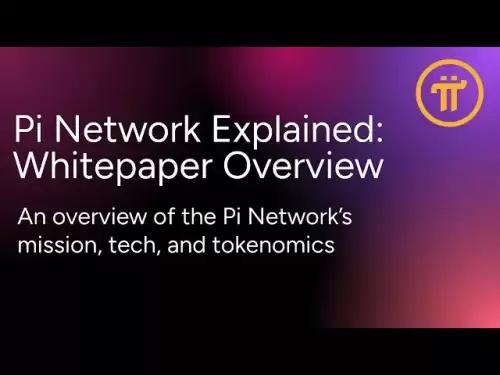-
 Bitcoin
Bitcoin $121,713.8152
3.06% -
 Ethereum
Ethereum $3,041.6437
2.42% -
 XRP
XRP $2.9499
5.12% -
 Tether USDt
Tether USDt $1.0000
-0.02% -
 BNB
BNB $704.1034
1.75% -
 Solana
Solana $166.7523
2.91% -
 USDC
USDC $0.9999
0.00% -
 Dogecoin
Dogecoin $0.2052
2.90% -
 TRON
TRON $0.3011
-0.47% -
 Cardano
Cardano $0.7461
1.42% -
 Hyperliquid
Hyperliquid $48.3650
1.12% -
 Stellar
Stellar $0.4548
3.52% -
 Sui
Sui $3.9527
14.50% -
 Chainlink
Chainlink $16.3300
5.87% -
 Bitcoin Cash
Bitcoin Cash $511.8016
1.25% -
 Hedera
Hedera $0.2395
1.40% -
 Avalanche
Avalanche $21.6526
2.06% -
 UNUS SED LEO
UNUS SED LEO $9.0073
-0.23% -
 Shiba Inu
Shiba Inu $0.0...01369
2.61% -
 Toncoin
Toncoin $3.0335
0.66% -
 Litecoin
Litecoin $96.6206
1.72% -
 Monero
Monero $355.1673
5.35% -
 Polkadot
Polkadot $4.0839
2.47% -
 Uniswap
Uniswap $9.3282
9.72% -
 Dai
Dai $0.9997
-0.01% -
 Ethena USDe
Ethena USDe $1.0004
-0.04% -
 Pepe
Pepe $0.0...01248
1.07% -
 Bitget Token
Bitget Token $4.4642
2.68% -
 Aave
Aave $325.0626
6.81% -
 Bittensor
Bittensor $418.1482
6.22%
What is a flash loan and how do they work in smart contracts?
Flash loans in DeFi allow instant, uncollateralized borrowing via smart contracts, enabling arbitrage, liquidations, and collateral swaps—all within a single blockchain transaction.
Jul 14, 2025 at 03:35 pm
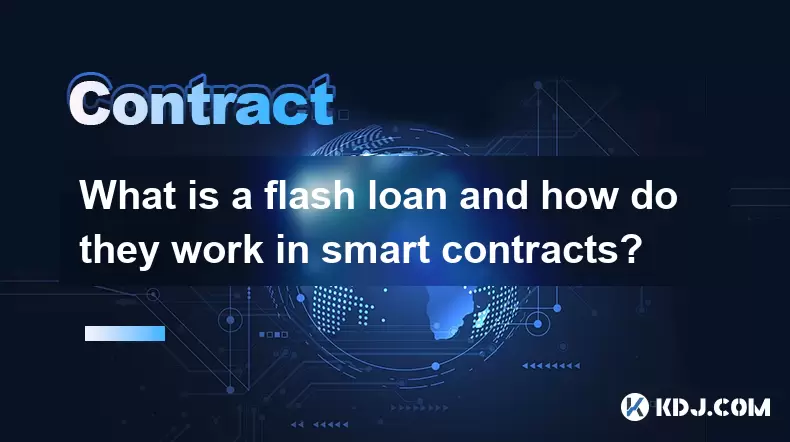
Understanding Flash Loans in the Cryptocurrency Ecosystem
A flash loan is a type of uncollateralized loan that exists entirely within the realm of decentralized finance (DeFi). Unlike traditional loans, which require borrowers to provide collateral or undergo credit checks, flash loans are executed instantaneously on blockchain networks and must be repaid within the same transaction. If repayment does not occur, the entire transaction is rolled back, as if it never happened.
The concept of flash loans was pioneered by platforms like Aave, one of the leading DeFi lending protocols. These loans allow users to borrow large amounts of cryptocurrency without any upfront capital, provided the borrowed funds are returned within the same block. This mechanism leverages the deterministic nature of blockchain transactions and smart contracts to enforce repayment rules automatically.
The Role of Smart Contracts in Enabling Flash Loans
At the heart of every flash loan lies a smart contract, a self-executing agreement with the terms of the loan written directly into code. When a user initiates a flash loan request, the smart contract performs several critical functions:
- It transfers the requested amount of tokens to the borrower's address.
- It executes the borrower's custom logic (e.g., arbitrage trades or liquidation strategies).
- It ensures that the borrowed amount plus any fees are repaid before the transaction concludes.
If the borrower fails to repay the loan or the repayment logic is not triggered correctly, the smart contract reverts the transaction. This means all actions performed during that transaction are undone, maintaining the integrity of the protocol’s liquidity pool.
Flash loans only work because of the atomicity property of blockchain transactions — either everything happens successfully, or nothing does. This eliminates counterparty risk for lenders while opening up new opportunities for advanced traders and developers.
Use Cases and Applications of Flash Loans
Although flash loans can seem abstract at first glance, they have practical applications in the DeFi ecosystem. Some of the most common use cases include:
- Arbitrage Opportunities: Traders can exploit price differences between decentralized exchanges (DEXs) by borrowing funds, buying an asset where it’s cheaper, and selling it where it’s more expensive — all within the same transaction.
- Liquidations: Users can use flash loans to cover margin calls or perform liquidations themselves, profiting from the process.
- Collateral Swaps: Borrowers can switch out their collateral assets without closing their existing positions, enabling more flexible portfolio management.
Each of these scenarios requires precise coding and execution since the loan must be repaid immediately. Any miscalculation or slippage can cause the transaction to fail and revert.
Technical Workflow of a Flash Loan Execution
To execute a flash loan, a developer must interact directly with a DeFi protocol’s smart contract. Here’s a simplified breakdown of how this typically works using Aave as an example:
- The borrower creates a custom smart contract that implements Aave’s
IFlashLoanReceiverinterface. - This contract includes a function called
executeOperation, which defines what the borrowed funds will be used for. - The borrower then calls the
flashLoanfunction on Aave’s LendingPool contract, specifying the token and amount to borrow. - The LendingPool contract transfers the funds and invokes the
executeOperationfunction. - Within this function, the borrower executes their strategy — such as swapping tokens on a DEX or performing arbitrage.
- Finally, the borrowed amount plus a small fee (usually 0.09% on Aave) is returned to the LendingPool contract.
Failure to complete any step correctly results in the entire transaction being reverted. This ensures that no funds are lost permanently and maintains trust in the system.
Risks and Considerations When Using Flash Loans
While flash loans offer powerful capabilities, they also come with significant risks and complexities:
- Smart Contract Vulnerabilities: Since flash loans rely heavily on custom logic, even minor bugs can lead to transaction failures or unexpected behavior.
- High Gas Costs: Executing complex operations within a single transaction can result in high Ethereum gas fees, especially during network congestion.
- Market Slippage: Arbitrage strategies depend on tight spreads; if prices change rapidly, the expected profit may disappear before the trade completes.
- Front-running Risks: Sophisticated actors may attempt to manipulate or intercept flash loan transactions for personal gain.
Additionally, flash loans have been exploited in various DeFi attacks, where malicious actors used them to drain funds from vulnerable protocols. These incidents highlight the importance of rigorous security audits and robust design when implementing flash loan functionality.
Frequently Asked Questions (FAQs)
Q: Can anyone use flash loans, or do you need special permissions?
Anyone with basic knowledge of smart contract development and access to a compatible DeFi protocol can use flash loans. No permission is required beyond deploying and interacting with the appropriate contracts.
Q: Are flash loans available on blockchains other than Ethereum?
Yes, flash loans are supported on multiple blockchain networks including Polygon, Avalanche, Binance Smart Chain, and others, depending on the DeFi platform.
Q: What is the minimum amount you can borrow with a flash loan?
There is no strict minimum — users can borrow any amount up to the available liquidity in the pool. However, very small loans may not be economically viable due to gas costs and fees.
Q: Do flash loans affect your credit score or financial history?
No, flash loans operate in a completely decentralized and pseudonymous environment. They do not involve identity verification or impact traditional credit scores.
Disclaimer:info@kdj.com
The information provided is not trading advice. kdj.com does not assume any responsibility for any investments made based on the information provided in this article. Cryptocurrencies are highly volatile and it is highly recommended that you invest with caution after thorough research!
If you believe that the content used on this website infringes your copyright, please contact us immediately (info@kdj.com) and we will delete it promptly.
- Trump, Bitcoin, and Reserves: A New Era for Crypto?
- 2025-07-14 22:50:11
- Bitcoin's Wild Ride: All-Time Highs and Crypto Week Mania!
- 2025-07-14 23:10:12
- Bitcoin's Wild Ride: Coin Surge and Fintech Experts Weigh In
- 2025-07-14 23:10:12
- Bitcoin's Ascent: From Crypto to Valuable Asset Dominating Global Finance
- 2025-07-14 22:30:11
- Bitcoin Price Prediction & AI Tokens: Riding the Crypto Wave
- 2025-07-14 22:50:11
- Strategy Scoops Big Bitcoin Paper Gains: A New York Minute
- 2025-07-14 22:55:12
Related knowledge

Psychology of trading Bitcoin contracts
Jul 13,2025 at 02:50am
Understanding the Emotional Rollercoaster of Bitcoin Futures TradingBitcoin contract trading, especially in the form of futures, introduces a high lev...
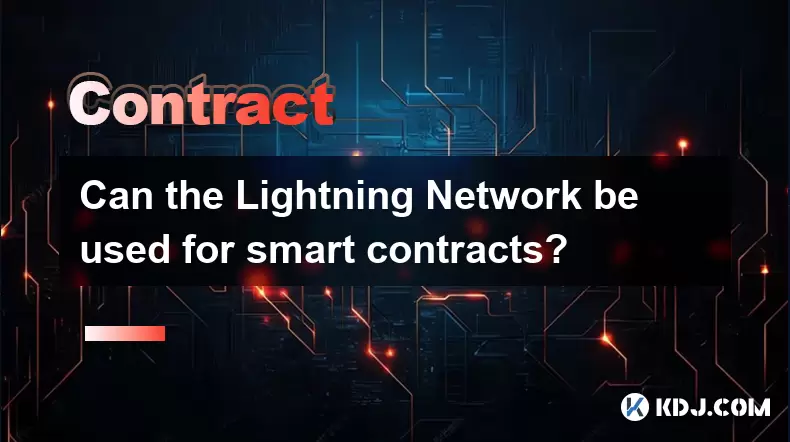
Can the Lightning Network be used for smart contracts?
Jul 14,2025 at 11:28pm
Understanding the Lightning Network's Core FunctionalityThe Lightning Network is a second-layer solution built on top of blockchain protocols like Bit...

Best time of day to trade Bitcoin contracts?
Jul 13,2025 at 05:29am
Understanding Bitcoin Contracts and Their VolatilityBitcoin contracts, particularly futures contracts, are derivative instruments that allow traders t...

How to use Fibonacci levels in Bitcoin contract trading?
Jul 13,2025 at 08:07am
Understanding Fibonacci Levels in TradingFibonacci levels are a technical analysis tool used by traders to identify potential support and resistance z...
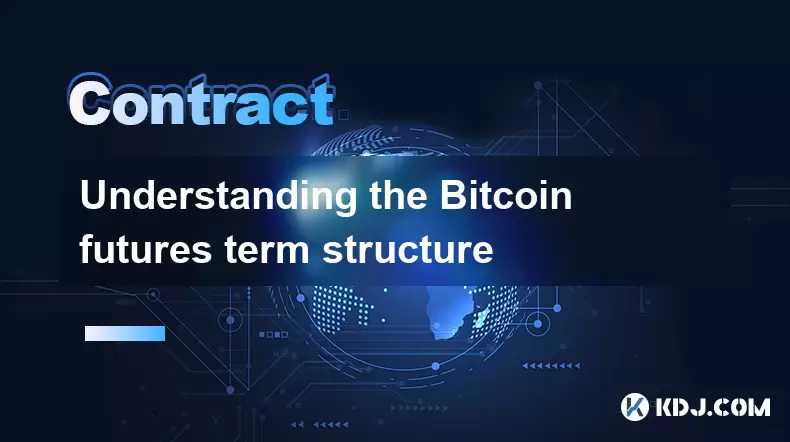
Understanding the Bitcoin futures term structure
Jul 13,2025 at 08:28am
What is Bitcoin Futures Term Structure?The Bitcoin futures term structure refers to the relationship between the prices of Bitcoin futures contracts w...
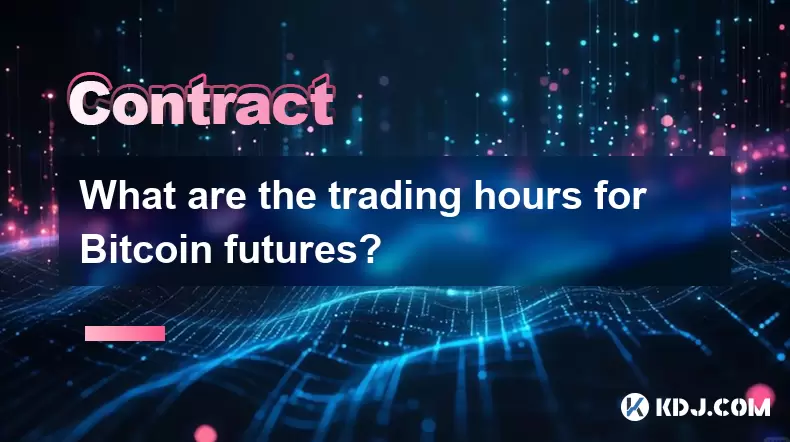
What are the trading hours for Bitcoin futures?
Jul 13,2025 at 12:14pm
Understanding Bitcoin Futures Trading HoursBitcoin futures are derivative contracts that allow traders to speculate on the future price of Bitcoin wit...

Psychology of trading Bitcoin contracts
Jul 13,2025 at 02:50am
Understanding the Emotional Rollercoaster of Bitcoin Futures TradingBitcoin contract trading, especially in the form of futures, introduces a high lev...

Can the Lightning Network be used for smart contracts?
Jul 14,2025 at 11:28pm
Understanding the Lightning Network's Core FunctionalityThe Lightning Network is a second-layer solution built on top of blockchain protocols like Bit...

Best time of day to trade Bitcoin contracts?
Jul 13,2025 at 05:29am
Understanding Bitcoin Contracts and Their VolatilityBitcoin contracts, particularly futures contracts, are derivative instruments that allow traders t...

How to use Fibonacci levels in Bitcoin contract trading?
Jul 13,2025 at 08:07am
Understanding Fibonacci Levels in TradingFibonacci levels are a technical analysis tool used by traders to identify potential support and resistance z...

Understanding the Bitcoin futures term structure
Jul 13,2025 at 08:28am
What is Bitcoin Futures Term Structure?The Bitcoin futures term structure refers to the relationship between the prices of Bitcoin futures contracts w...

What are the trading hours for Bitcoin futures?
Jul 13,2025 at 12:14pm
Understanding Bitcoin Futures Trading HoursBitcoin futures are derivative contracts that allow traders to speculate on the future price of Bitcoin wit...
See all articles


























